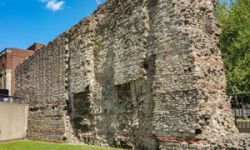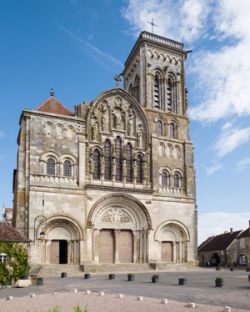Exploring Bermondsey’s Architecture
Posted on 20/01/2023
Bermondsey has a deep and fascinating history. The area, located in South East London, has been settled since pre-Roman times. It was first documented as “Bermundesy” in 1086, when it was part of an extensive manor belonging to Archbishop Lanfranc of Canterbury. Over the centuries, Bermondsey has seen its fair share of development – from medieval abbeys to Victorian industrial factories. Today, the borough is home to some interesting examples of architectural styles that reflect its varied past. Here we take an in-depth look at the historical buildings and structures found throughout Bermondsey.

The Roman Wall
One of the oldest landmarks in Bermondsey is the remains of a section of Roman wall built around AD 200 by Emperor Severus Alexander. This wall extended for more than 20 miles along what is now known as Watling Street (now known as Old Kent Road). During WWII this section of wall was heavily damaged due to bombing raids but it still stands today as a reminder of the area’s important role during Roman rule.

The Abbey
Bermondsey’s most famous landmark is undoubtedly the ruins of St Mary Magdalene’s Abbey which was founded by Benedictine monks in 1082 CE. The abbey, which stood between Grange Road and Abbey Street until its dissolution in 1538 CE, was one of England’s most powerful monasteries during its time. Its impressive architecture included a Norman church with two towers and a separate guest house for visitors to stay during their travels. Today, all that remains are ruins but they still make for an interesting sightseeing destination if you want to explore Bermondsey’s past further.
The Market Place
Bermondsey also boasts another historic attraction – its famous Market Place which dates back to 1276 CE when King Edward I granted permission for local traders to use it for trading purposes. Nowadays, the market offers fresh produce from farmers both local and from abroad as well as antiques and other trinkets from vintage shops dotted around the area. It’s definitely worth exploring if you find yourself visiting Bermondsey on a Saturday morning!
The Fire Station
Built between 1895-1897 CE by Arthur Cawston & Sons Ltd., this Grade II listed building served as the headquarters for both fire brigade services and police forces across Southwark until 1924CE when it became solely used by fire brigades only until 1966CE when it closed down completely. Today, although no longer operational, The Fire Station can still be viewed from outside where you can appreciate its stunning red brick façade and impressive archways that reflect its Victorian heritage perfectly.[1]

The Malt House
Also situated within walking distance from The Fire Station lies another Grade II listed building – The Malt House which dates back to 1760CE and originally served as a brewery before being converted into factory premises for leather tanning business JG Leather Co Ltd in 1890CE.[2] Although now disused, this imposing building with its five storeys still stands tall – making it yet another great example of how old architecture blends with modern day surroundings so effortlessly here in Bermondsey!

Blue Anchor Lane Warehouse
If you fancy heading off on a bit more of an adventure then why not head over to Blue Anchor Lane where you will find one final example of historical architecture – namely the 19th century warehouse complex situated there which once stored goods brought upriver via barges.[3] This unique collection features four warehouses connected together through bridges and includes spectacular gothic arches reminiscent of medieval style castles mixed with industrial touches such as exposed bricks walls - making it truly one-of-a-kind place!
Conclusion
It's clear that even just within these few examples alone there is plenty evidence that Bermondsey's past is alive and kicking today thanks largely due to some incredible pieces of architectural heritage surviving even after centuries have passed! From ancient Roman walls dating back over 2000 years ago through Medieval Abbeys right up until more modern influences such as Victorian fire stations - exploring each site gives us insight into how different eras have left their own mark upon our beloved borough - making it well worth checking out next time you're in town!



